View in other NatureServe Network Field Guides
NatureServe
Montana
Utah
Wyoming
Idaho
Wisconsin
British Columbia
South Carolina
Yukon
California
New York
Obelisk Dart Moth - Euxoa obeliscoides
General Description
The Obelisk Dart (Euxoa obeliscoides) is a medium-size moth (36-39 mm wingspan). The head and body are light brown, with a fine dark grey band on the prothoracic shield and along the edges of the tegulae. The forewing costa is cream-colored and contrasts strongly with the brown forewing. There is a short, thick black basal dash, and the antemedian and postmedian lines are narrow and black, with the later slightly scalloped at the veins. The large, rectangular reniform, and the orbicular and claviform spots are outlined in black, with the first two filled with cream-colored scales like the costa. The area beyond the postmedian line is slightly paler than the rest of the wing, but darkens toward the outer margin. The lower half of the basal half of the wing is darker grey or grey brown. The fringe is pale brown. The hindwings are light smoky brown, darker toward the margin with bream or white fringes (Anweiler 2003).
Phenology
There is a single flight from late July through September (Powell and Opler 2009). It over-winters in the egg stage. The immature stages are known only from laboratory-reared material (Anweiler 2003).
Diagnostic Characteristics
E. obeliscoides is unlikely to be mistaken for any Euxoa except the very closely related and very similar E. oberfoelli. E. obeliscoides may be recognized by its distinctive forewing pattern and the presence of a dark marginal band on the hindwing. The two species can be separated with certainty only by examination of the male vesica. E. oberfoelli is a species of the arid grasslands that occurs in southern Saskatchewan but has not yet been found in Alberta (Anweiler 2003).
Species Range
Montana Range
Range Descriptions
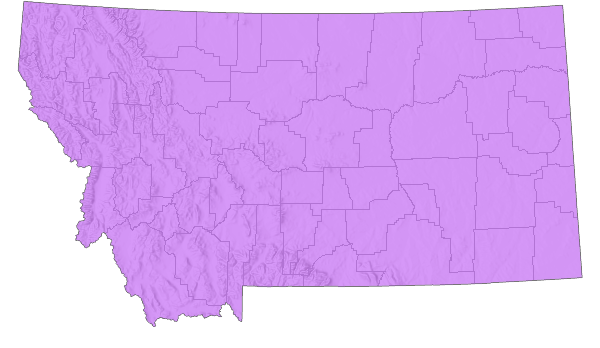
 Native
Native
Range Comments
The Obelisk Dart ranges from southern Quebec and northern Pennsylvania, west across southern Canada to British Columbia, and south to Arizona, New Mexico, California, and central Kansas (Anweiler 2003).
Observations in Montana Natural Heritage Program Database
Number of Observations: 35
(Click on the following maps and charts to see full sized version)
Map Help and Descriptions
Relative Density
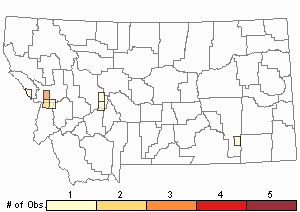
Recency
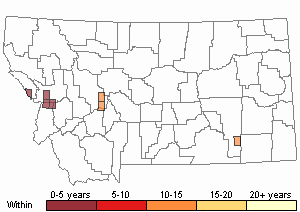

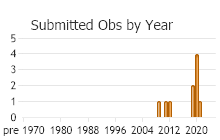
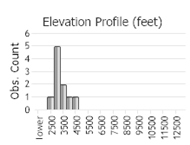 (Observations spanning multiple months or years are excluded from time charts)
(Observations spanning multiple months or years are excluded from time charts)
Habitat
The Obelisk Dart is a fairly common and widespread species of the sandy boreal pine forest, dry aspen parklands, and riparian cottonwood stands in the grasslands (Anweiler 2003).
Stewardship Responsibility
References
- Literature Cited AboveLegend:
 View Online Publication
View Online Publication Powell, J.A. and P.A. Opler. 2009. Moths of Western North America. University of California Press, Berkeley, CA. 369 pp.
Powell, J.A. and P.A. Opler. 2009. Moths of Western North America. University of California Press, Berkeley, CA. 369 pp.
- Web Search Engines for Articles on "Obelisk Dart Moth"
- Additional Sources of Information Related to "Insects"





